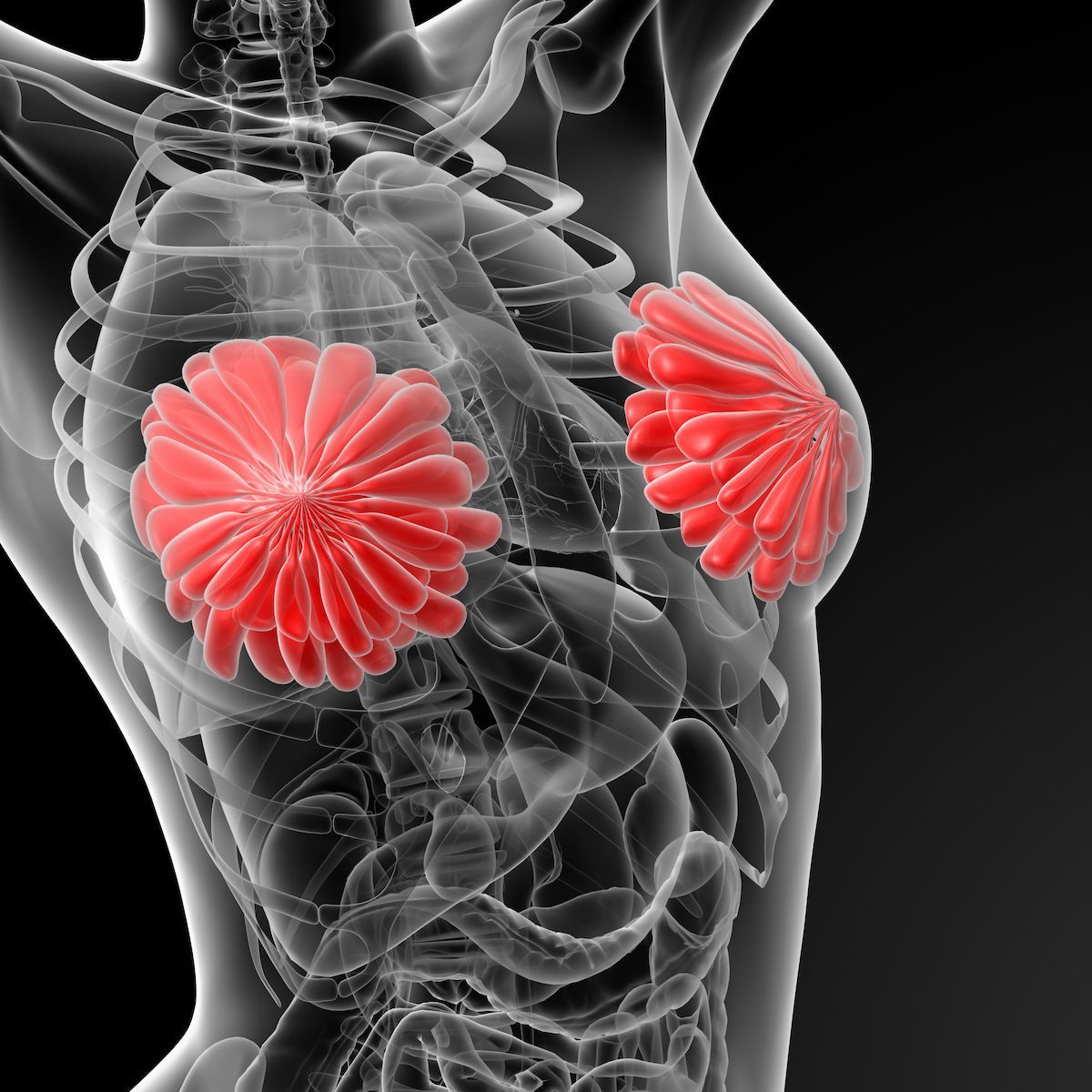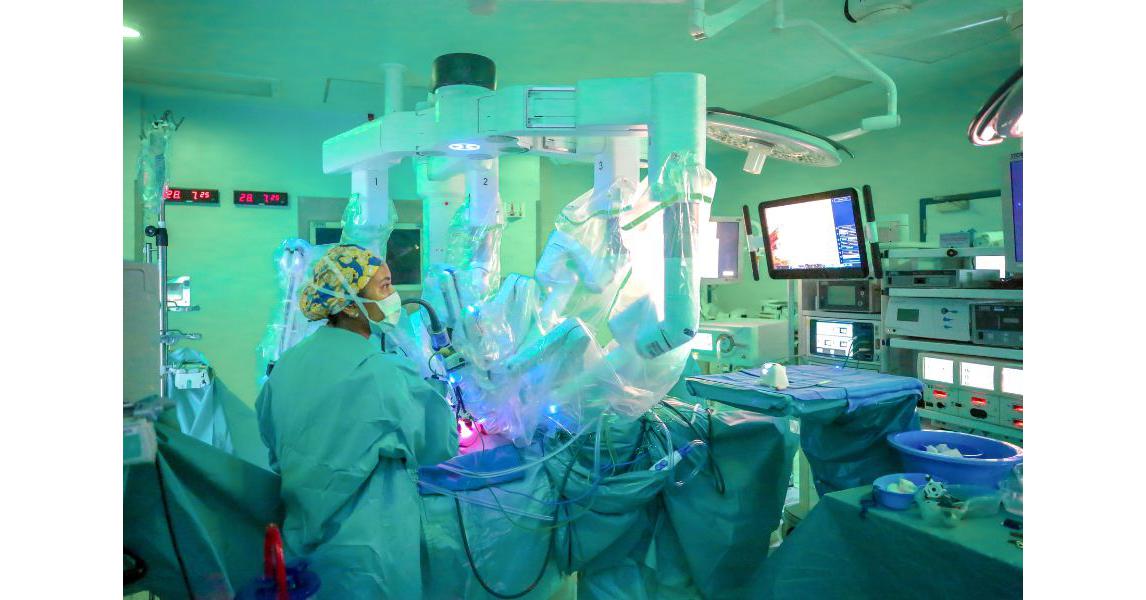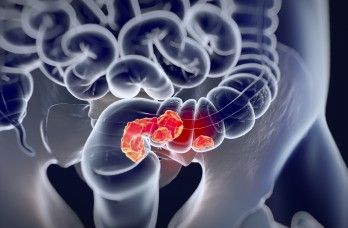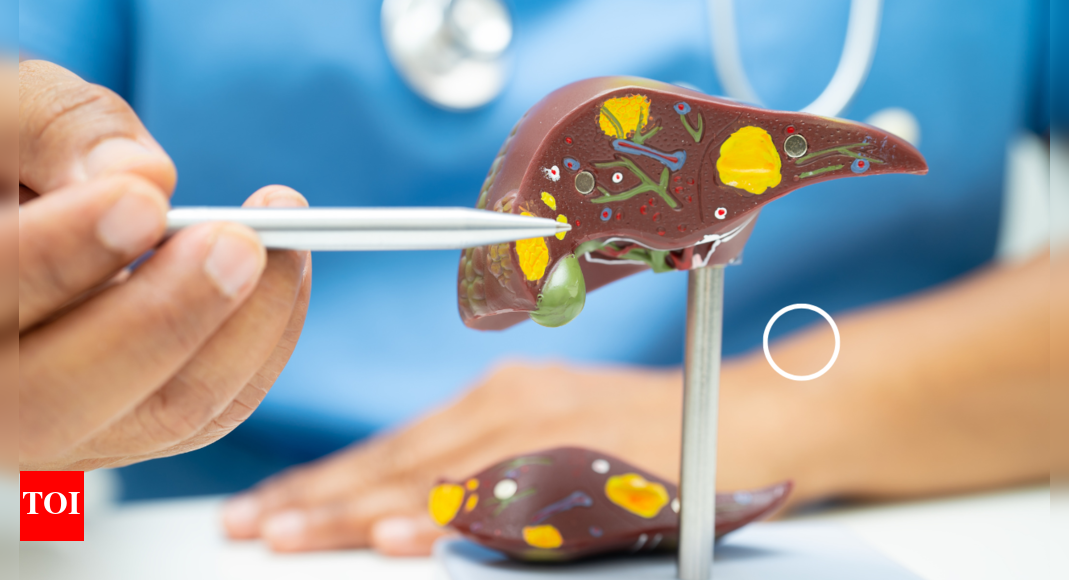Do you sometimes feel constantly tired, no matter how much rest you get? Or experience a lingering, mild pain on the upper right side of your abdomen? You may even notice a faint yellow tinge in your skin or eyes – signs we often brush off as…
Blog
-

An Seyoung makes history while Jonatan Christie bests world champion Shi
Olympic champion An Seyoung was in a hurry today, Sunday (19 October), to complete her quest of achieving a career Grand Slam at Super 750 level, beating defending champion Wang Zhi Yi in two sets, 21-5, 24-22.
The Republic of Korea athlete now…
Continue Reading
-

Subgroup Analysis Yields Clinically Meaningful Responses With T-DXd in HER2+ Breast Cancer
A clinically meaningful progression-free survival benefit (PFS) was observed with fam-trastuzumab deruxtecan-nxki (T-DXd; Enhertu) plus pertuzumab (Perjeta), despite prior treatment, hormone receptor status, or PIK3CA mutations, when compared with taxol, trastuzumab, and pertuzumab (THP), for patients with HER2-positive advanced or metastatic breast cancer. The results were presented as a subgroup analysis for the phase 3 DESTINY-Breast09 trial (NCT04784715) at the
European Society for Medical Oncology Congress 2025 .Prior Treatment Status
The PFS assessment for prior treatment status looked at those with de novo disease or recurrent disease. The median PFS for patients with de novo disease and treated with T-DXd plus pertuzumab was not calculable (NC; 95% CI, 36.5-NC) compared with 31.2 months (95% CI, 23.5-NC) for patients treated with THP (HR, 0.49; 95% CI, 0.35-0.70). The PFS for those with recurrent disease in the T-DXd plus pertuzumab arm was 38.0 months (95% CI, 26.9-NC) and 22.5 months (95% CI, 18.1-NC) for those in the THP arm (HR, 0.63; 95% CI, 0.46-0.87).
The confirmed objective response rate (cORR) for patients with de novo disease receiving T-DXd plus pertuzumab (n = 200) was 90.5% (95% CI, 85.6%-94.2%) with 16.5% of patients having a complete response (CR) and 74.0% having a partial response (PR) vs 82.0% (95% CI, 76.0%-87.1%) in the THP arm (n = 200) and 6.5% having a CR and 75.5% having a PR. For those with recurrent disease, the cORR for those with de novo disease (n = 183 vs 187) was 79.2 (95% CI, 72.6%-84.9%) with 13.7% having a CR and 65.6% having a PR vs a cORR of 74.9% (95% CI, 68.0%-80.9%) with 10.7% having a CR and 64.2% having a PR.
The median duration of response (DOR) for de novo disease in the T-DXd plus pertuzumab arm was 39.2 months (95% CI, 35.1-NC) vs 31.3 months (95% CI, 24.5-NC) for those in the THP arm. For those with recurrent disease, the median DOR was 35.3 months (95% CI, 27.3-NC) vs 21.9 months (95% CI, 18.4-NC) in the THP arm.
Baseline characteristics for those with de novo disease in the T-DXd plus pertuzumab arm compared with the THP arm was an ECOG performance status of 0 (68.0% vs 60.5%), brain metastases (5.0% vs 3.5%), visceral metastases (73.0% vs 68.5%), hormone receptor positive status (56.0% vs 53.0%), and PIK3CA mutations not detected (73.0% vs 72.5%). For those with recurrent disease, the characteristics included an ECOG performance status of 0 (65.6% vs 66.8%), brain metastases (8.2% vs 8.0%), visceral metastases (73.8% vs 70.1%), hormone receptor positive status (51.9% vs 55.1%), and PIK3CA mutations not detected (65.6% vs 64.7%).
For those with de novo or recurrent disease, any treatment-emergent adverse effects (TEAEs) occurred in 100% vs 99.4% of patients in the T-DXd arm vs 99.0% vs 98.9% in the THP arm. TEAEs of grade 3 or higher were noted in 57.0% vs 52.5% in the T-DXd arm and 51.0% vs 53.8% in the THP arm. Any TEAEs leading to discontinuation occurred in 23.0% vs 18.2% of patients in the T-DXd arm vs 33.3% vs 22.8% in the THP arm. Adjudicated drug-related interstitial lung disease (ILD)/pneumonitis occurred in 14.5% vs 9.4% in the T-DXd arm and 1.0% vs 1.1% in the THP arm.
Hormone Receptor Status
The median PFS for patients who were hormone receptor-positive was 38.0 months (95% CI, 36.0-NC) in the T-DXd plus pertuzumab arm and 27.7 months (95% CI, 22.4-NC) for patients in the THP arm (HR, 0.61; 95% CI, 0.44-0.,84). For patients who were hormone receptor-negative, the median PFS in the T-DXd plus pertuzumab arm was 40.7 months (95% CI, 40.7-NC) vs 22.6 months (95% CI, 17.3-32.7) in the THP arm (HR, 0.52; 95% CI, 0.37-0.73).
“Patients with [hormone receptor-positive disease] could receive concurrent [endocrine therapy] benefit after 6 cycles of T-DXd or discontinuation of taxane [therapy], which occurred in 13.5% [of patients in the T-DXd plus pertuzumab arm] vs 38.3% [in the THP arm],” Sibylle Loibl, MD, PhD, chair of the German Breast Group and the Chief Executive Officer, and associate professor of obstetrics and gynecology at the Goethe University of Frankfurt, said in the presentation.
Regarding cORR for patients with hormone receptor-positive disease in the T-DXd plus pertuzumab arm (n = 207) was 81.2% (95% CI, 75.2%-86.2%), with 14.5% of patients having a CR and 66.7% having a PR. In the THP arm (n = 209), the cORR was 77.0% (95% CI, 70.7%-82.6%) with 7.2% of patients having a CR and 69.9% having a PR. For patients with hormone receptor-negative disease, the cORR in the T-DXd plus pertuzumab arm (n = 176) was 89.8% (95% CI, 84.3%-93.8%), with 15.9% of patients having a CR and 73.9% having a PR. In the THP arm (n = 178), the cORR was 80.3% (95% CI, 73.7%-85.9%) with 10.1% of patients having a CR and 70.2% having a PR.
The median DOR for patients with hormone receptor-positive disease receiving T-DXd plus pertuzumab was 35.3 months (95% CI, 34.8-NC) vs 26.4 months (95% CI, 22.3-NC) for patients in the THP arm. For those with hormone receptor-negative disease, the median DOR in the T-DXd plus pertuzumab arm was 39.2 months (95% CI, 398.2-NC) vs 26.3 months (95% CI, 20.2-NC) in the THP arm.
Baseline characteristics for patients who are hormone receptor-positive in the T-DXd plus pertuzumab vs THP arms included an ECOG performance status of 0 (68.1% vs 61.7%), brain metastases (4.8% vs 3.3%), visceral metastases 71.0% vs 67.5%), de novo disease (54.1% vs 50.7%), and PIK3CA mutations not detected (70.5% vs 69.4%). For patients who are hormone receptor-negative, the baseline characteristics included an ECOG performance score of 0 (65.3% vs 65.7%), brain metastases (8.5% vs 8.4%), visceral metastases (76.1% vs 71.3%), de novo status (50.0% vs 52.8%), recurrent status (50.0% vs 47.2%), and PIK3CA mutations not detected (68.2% vs 68.0%).
Regarding safety for hormone receptor-positive and hormone receptor-negative status, any TEAEs occurred in 1010% vs 99.4% in the T-DXd arm and 98.1% vs 100% in the THP arm; and TEAEs of grade 3 or higher occurred in 52.4% vs 57.7% in the T-DXd arm and 52.7% vs 52.0% in the THP arm; serious TEAEs were noted in 28.2% vs 25.7% compared with 29.0% vs 20.6%; TEAEs leading to discontinuation occurred in 17.0% vs 25.1% and 27.1% vs 29.7%; and adjudicated drug-related ILD/pneumonitis occurred in 9.7% vs 14.9% and 0.5% vs 1.7%, respectively.
PIK3CA Mutation Status
The median PFS for patients with PIK3CA mutations was 36.0 months (95% CI, 29.7%-NC) vs 18.1 months (95% CI, 15.1-25.6) in both arms, respectively, (HR, 0.52; 95% CI, 0.35-0.77). For those with PIK3CA not detected, the median PFS was 40.7 months (95% CI, 38.0-NC) for patients in the T-DXd plus pertuzumab arm and 32.7 months (95% CI, 24.2-NC) in the THP arm (HR, 0.57; 95% CI, 0.43-0.77).
The cORR for patients with PIK3CA mutations in the T-DXd plus pertuzumab arm (n = 116) was 81.0% (95% CI, 72.7%-87.7%) with 14.7% of patients having a CR and 66.4% having a PR vs a cORR of 73.6% (95% CI, 64.8%-81.2%) in the THP arm (n = 121) with 4.1% having a CR and 69.4% having a PR. For those who did not have PIK3CA mutations detected, the cORR was 87.2% (95% CI, 862.6%-91.0%) with 15.4% having a CR and 71.8% having a PR in the T-DXd plus pertuzumab arm (n = 266) vs 80.8% (95% CI, 75.6%-85.4%) with 10.5% having a CR and 70.3% having a PR in the THP arm (n = 266).
The median DOR for patients with PIK3CA mutations was 34.8 months (95% CI, 34.8-NC) in the T-DXd plus pertuzumab arm vs 18.4 months (95% CI, 13.2-26.1) in the THP arm. For those with PIK3CA mutations not detected, the median DOR was 39.2 months (95% CI, 35.3-NC) vs NC (95% CI, 25.6-NC).
Baseline characteristics for patients with PIK3CA mutations between either arm included an ECOG performance status of 0 (61.2% vs 62.8%), brain metastases (6.9% vs 5.0%), visceral metastases (64.7% vs 63.6%), recurrent disease status (53.4% vs 54.5%), and hormone receptor positive status (52.6% vs 52.9%). For those with PIKik3CA mutations not detected, characteristics included an ECOG performance status of 0 (69.5% vs 63.9%), brain metastases (6.4% vs 6.0%), visceral metastases (77.1% vs 71.8%), de novo disease (54.9% vs 54.5%), and hormone receptor positive status (54.9% vs 54.5%).
For those with PIK3CA status detected or not detected, any TEAEs occurred in 100% vs 99.6% in the T-DXd arm and 99.2% vs 98.9% in the THP arm; grade 3 or higher TEAEs occurred in 53.0% vs 55.8% and 45.0% vs 55.7%; TEAEs leading to discontinuation in 17.4% vs 22.3% and 24.2% vs 30.2%; and adjudicated drug-related ILD/pneumonitis in 9.6% vs 13.2% and 2.5% vs 0.4%, respectively.
DESTINY-Breast09 Study Design
Patients were randomly assigned 1:1:1 to either T-DXd plus placebo (blinded until the PFS analysis; n = 387), T-DXd plus pertuzumab (n = 383), or THP (n = 387). This analysis focused on the T-DXd plus pertuzumab and THP arms.
The primary end point was PFS by blinded independent central review, with secondary end points including overall survival, PFS by investigator, ORR by BICR/investigator, DOR, PFS2 by investigator, and safety and tolerability.
The investigators noted that if patients discontinued T-DXd due to adverse effectsAEs except for higher than grade 2 interstitial lung disease, patients could switch to trastuzumab. For patients with hormone receptor-positive disease, concurrent use of endocrine therapy was allowed after 6 cycles of T-DXd or who discontinued taxane.
Patients were enrolled if they had first-line HER2-positive advanced/metastatic breast cancer; a disease-free interval of 6 months or more from last neoadjuvant or adjuvant therapy; 1 prior line of endocrine therapy for advanced/metastatic breast cancer; and asymptomatic brain metastases were allowed.
Reference
Loibl S, Jiang Z, Barroso-Sousa R, et al. Trastuzumab deruxtecan (T-DXd) + pertuzumab vs taxane + trastuzumab + pertuzumab (THP) for patients with HER2+ advanced/metastatic breast cancer: additional analyses of DESTINY-Breast09 in key subgroups of interest. Presented at the European Society for Medical Oncology Congress 2025, October 17-21, 2025; Berlin, Germany. LBA18.
Continue Reading
-
KP Governor, Interior Minister review KP’s security situation, border management
- Kundi, Naqvi salute forces combating Indian-backed terror groups in KP, paying tributes to martyrs of PTC, NADRA office assaults
- Both leaders term Federal, provincial coordination vital for durable stability, underscoring IBOs key to ensuring…
Continue Reading
-

Highland rail line closes as £4.5m upgrade begins
A railway line in the west Highlands has been closed to allow for £4.5m worth of upgrades to be carried out over the coming weeks.
The Kyle line stretches more than 50 miles (80km) from Inverness to Kyle of Lochalsh.
Around 4.5 miles (7km) of track will be upgraded between Achnashellach and Strathcarron, with worn rails, sleepers and ballast to be replaced in order to improve the long-term reliability and safety of the route.
To allow the work to be carried out safely, the line will remain closed between Dingwall and Kyle of Lochalsh until Monday 10 November.
The project also includes inspections of bridges and drainage improvements to help prevent flooding and weather-related disruption.
An amended train service has been put in place between Inverness and Dingwall, calling at Beauly, Muir of Ord, and Conon Bridge.
Buses will replace train services between Inverness and Stromeferry, with a shuttle bus connecting Stromeferry and Kyle of Lochalsh.
ScotRail Service Delivery Director Mark Ilderton said: “We’re grateful to customers for their patience and understanding when these vital improvements take place.”
Continue Reading
-
Why Wall Street is fearful of more lending blow-ups – The Economist
- Why Wall Street is fearful of more lending blow-ups The Economist
- JP Morgan CEO issues blunt warning on auto industry bankruptcies TheStreet
- JPMorgan’s Dimon on Tricolor losses: ‘It is not our finest moment’ Yahoo Finance
- ‘Cockroach’ jabs and regional bank breakdowns: The week private credit’s ‘golden’ narrative got a little less shiny businessinsider.com
- Factoring Swells Worries for Tariff-Hit Auto-Parts Manufacturers Bloomberg.com
Continue Reading
-

WHO: One in Five African Infections Now Resistant to Antibiotics
- Over 70% of key bacteria resist standard treatments in Africa
- WHO urges urgent action to prevent global health crisis
Antibiotic resistance now affects one in five infections across Africa, surpassing the global average, where one in…
Continue Reading
-

Saudi Arabia’s KFSHRC Ranks Among the World’s Top Centers for Kidney Transplant Outcomes
RIYADH, SAUDI ARABIA, October 19, 2025 /EINPresswire.com/ — King Faisal Specialist Hospital and Research Centre (KFSHRC) has recorded exceptional kidney transplant survival rates, with one-year patient and graft survival ranging between 97…
Continue Reading
-

Some Apple iPhone 17 Pro models Cosmic Orange colour is fading to pink
Apple iPhone 17 Pro and iPhone 17 Pro Max owners are reporting that the Cosmic Orange colour is fading to pink, raising quality concerns about Apple’s latest premium devices. The colour change appears most prominent around the aluminium frame…
Continue Reading
-

Adjuvant Therapy Confers Postoperative ctDNA Clearance, DFS Benefit in CRC
Adjuvant therapy can feasibly yield circulating tumor DNA (ctDNA) clearance in a portion of patients with colorectal cancer (CRC) and postoperative ctDNA positivity, with clearance correlating with superior disease-free survival (DFS) outcomes, according to findings from the INTERCEPT CRC study presented at the
European Society for Medical Oncology (EMSO) Congress 2025. 1ctDNA dynamics data after the time of surgery or ablation revealed that 69% of patients had ctDNA negativity on all tests, while 18% had positive results on all tests. Additionally, 3.1% had ctDNA clearance on at least 2 tests, 2.4% had clearance on 1 test, and 8% converted from ctDNA negativity to positivity. Furthermore, adjuvant therapy resulted in ctDNA clearance among 26% (n = 20/77) of patients with ctDNA-positive results after surgery, with 13 (17%) having clearance on at least 2 tests.
From the time of first ctDNA-positive test result in the stage I to III CRC population, DFS outcomes were significantly improved among those with clearance on at least 2 tests (P <.0001). Data revealed similarly significant outcomes among patients with stage IV disease (P <.0001).
Following adjuvant therapy, 70% of patients had ctDNA negativity on all tests, while 19% had positive results on all tests. Other data showed that 1.5% had ctDNA negativity on at least 2 tests, 1.4% had clearance on 1 test, and 9% converted from ctDNA negativity to positivity.
The study population included 403 patients who had ctDNA-positive results at any time after surgery and adjuvant treatment, with 4.2% showing at least 1 subsequent negative reading without any intervention. Furthermore, 2.1% of this population had ctDNA-negative results on at least 2 sequential tests without any intervention, and 1.7% had no recurrences at the time of follow-up. Among patients with spontaneous ctDNA clearance, the median duration of clearance was 11.2 months, and the mean tumor molecules per milliliter was 0.06 (range, 0.02-1.89).
“Adjuvant treatment can clear a quarter of the patients [who] are ctDNA positive postoperatively. Those with ctDNA clearance had superior DFS,” presenting author Emerik Osterlund, MD, PhD, a postdoctoral fellow in Gastrointestinal Medical Oncology at The University of Texas MD Anderson Cancer Center, stated in the presentation.1 “The rate and durability of [spontaneous] ctDNA clearance was very low.”
According to Osterlund, previous studies have demonstrated how ctDNA can be employed to monitor minimal residual disease, with ctDNA positivity representing a strong risk factor for disease recurrence following procedures administered with curative intent.2 However, he noted limited findings on the rates and durability of spontaneous ctDNA clearance, the process of transitioning from ctDNA positivity to negativity without any intervention. Consequently, Osterlund and colleagues aimed to evaluate the behavior and clearance of ctDNA following procedures with curative intent among patients with stage I to IV CRC.
As part of the INTERCEPT program, 1301 patients with newly diagnosed or previously treated resectable stage I to IV CRC enrolled on the study, with 53% having stage I to III disease and 47% having stage IV disease. Patients received standard-of-care therapy—surgical resection with or without neoadjuvant and adjuvant treatment—and underwent tissue collection and testing via ctDNA assays in the postoperative setting and/or following therapy. Investigators then conducted routine surveillance via imaging & labs, with ctDNA assay testing occurring approximately every 3 months at each surveillance visit.
“ctDNA clearance is useful for seeing potential benefit in novel therapeutic studies,” Osterlund concluded.1
References
- Osterlund E, Maddalena G, Pellatt AJ, et al. Circulating tumour DNA (ctDNA) clearance and correlation with outcome in the INTERCEPT colorectal cancer (CRC) study. Presented at the European Society for Medical Oncology (ESMO) Congress 2025; October 17-21, 2025; Berlin, Germany. Abstract 732MO.
- Dasari A, Morris VK, Allegra CJ, et al. ctDNA applications and integration in colorectal cancer: an NCI Colon and Rectal-Anal Task Forces whitepaper. Nat Rev Clin Oncol. 2020;17(12):757-770. doi:10.1038/s41571-020-0392-0.
Continue Reading
